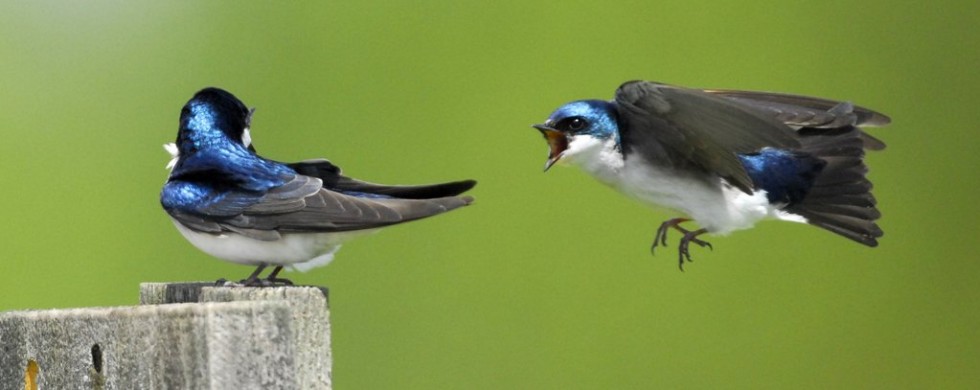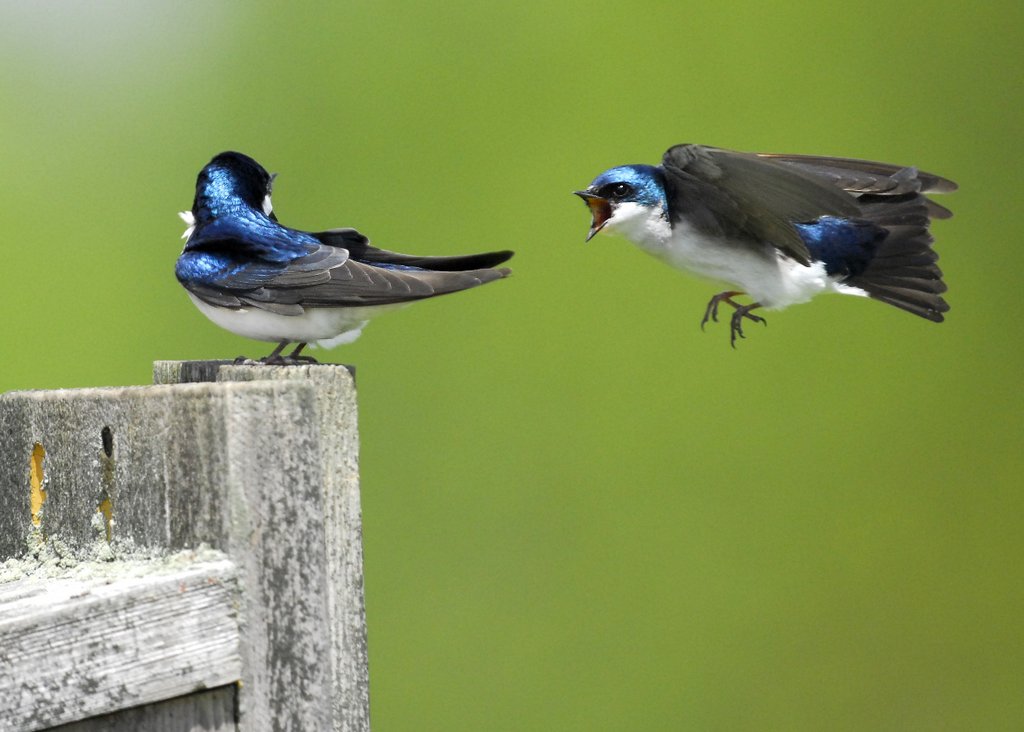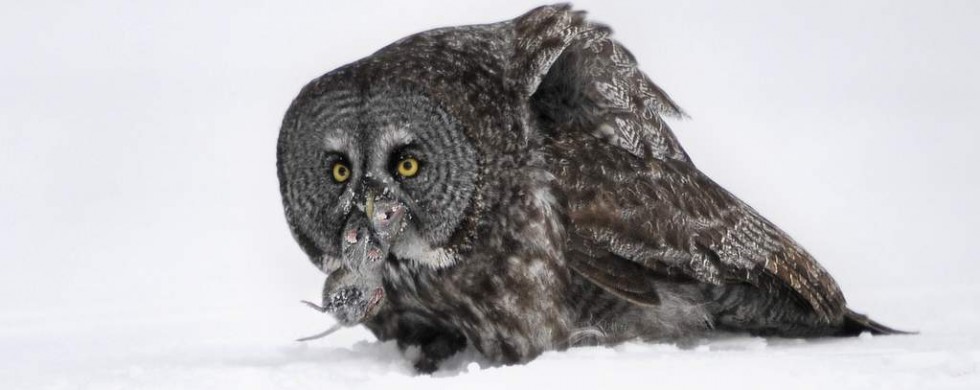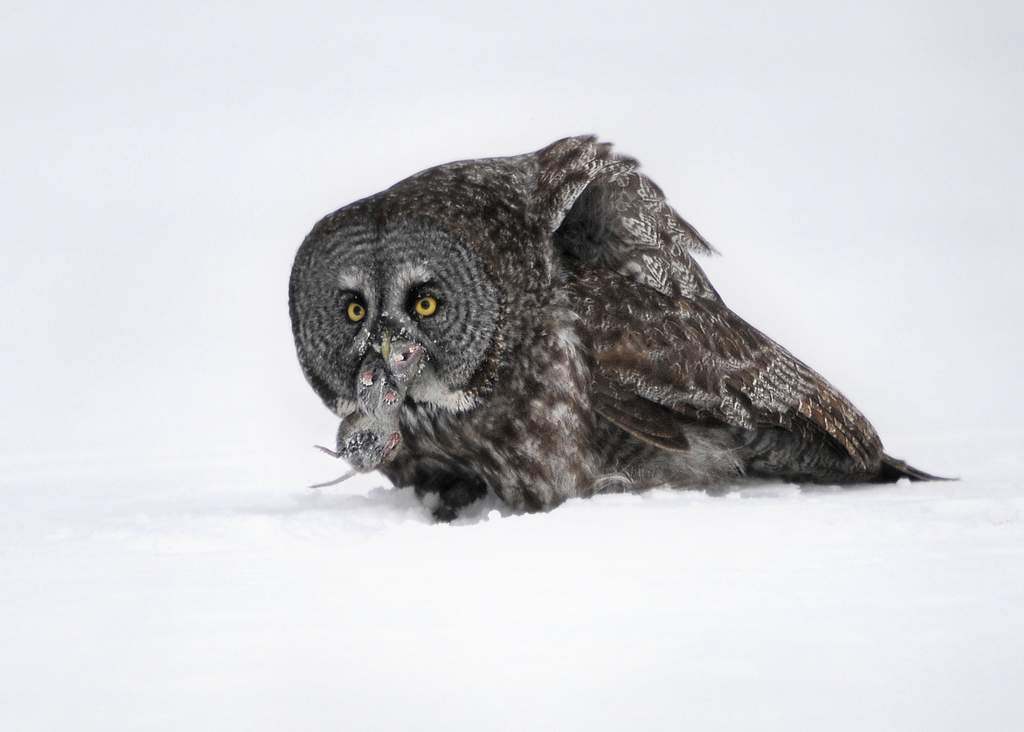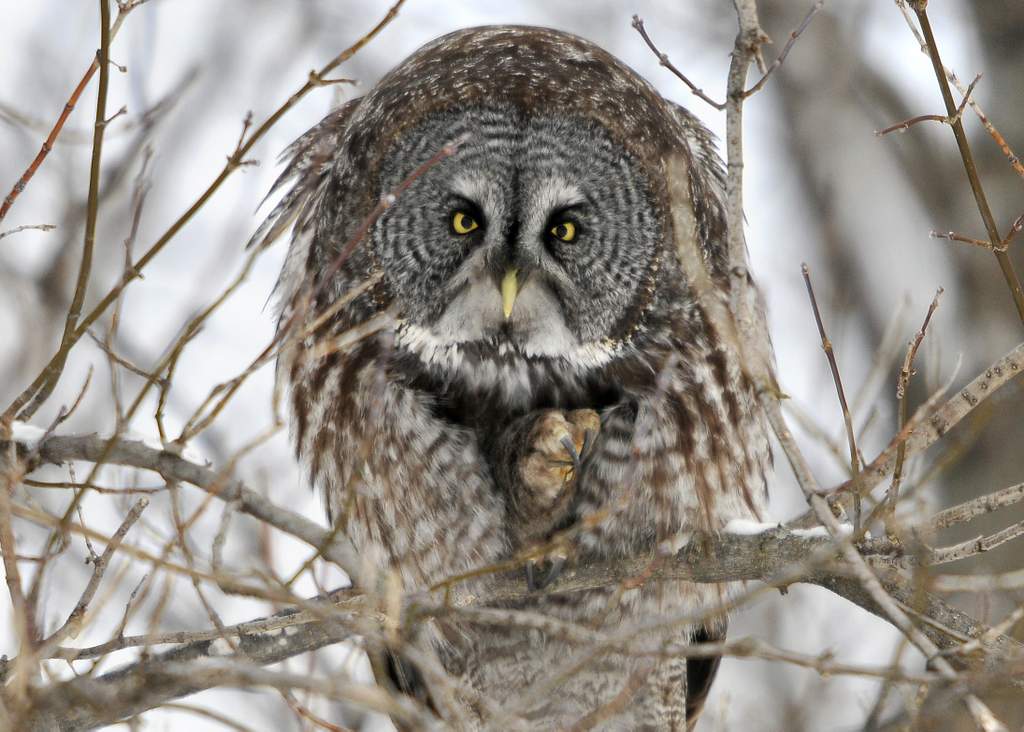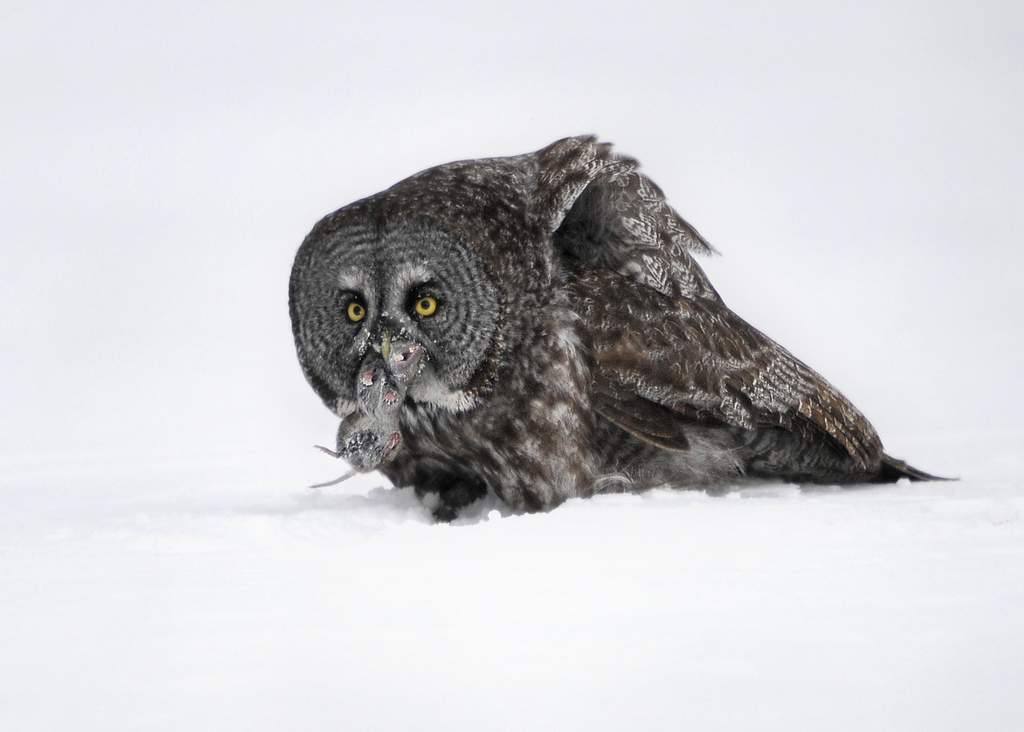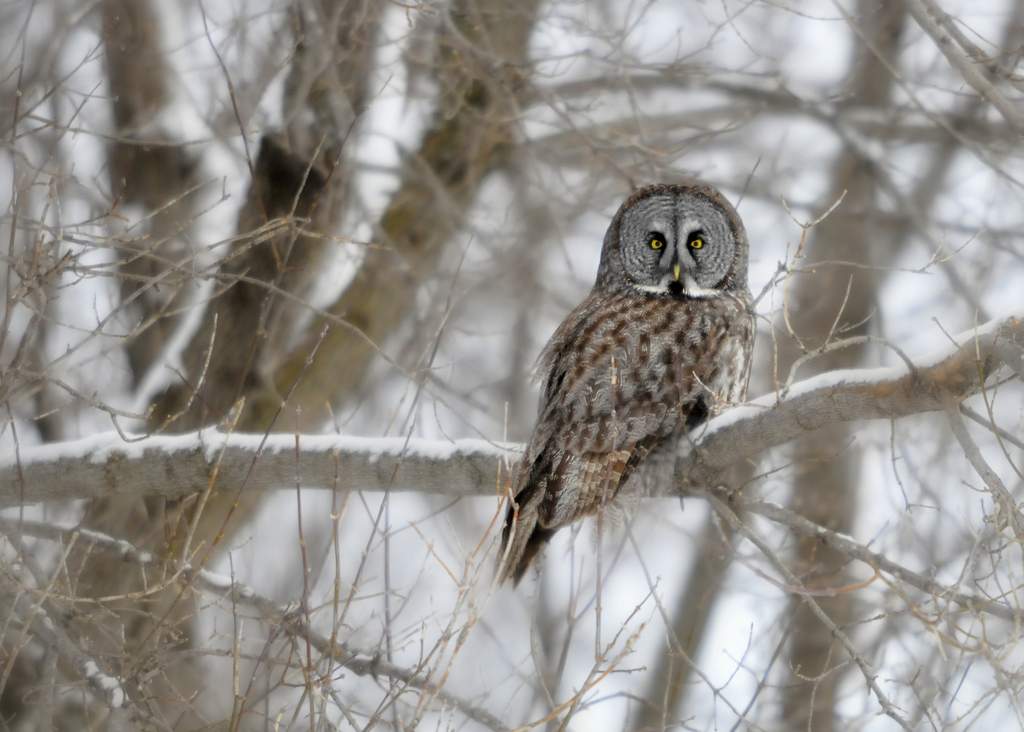30
Shot of the Month – April 2013
Most viewers cannot resist applying a narrative to this image of two Tree Swallows (TSs).
Many a spouse finds kinship with the bird on the left who appears to be getting an earful from the partner on the right. Perhaps the nest was left a mess? Forgot to bring home the mayflies for the kids? Well, no need to gossip.
Tree Swallows are found throughout most of the US and Canada but spend the winters in Mexico, Central America, and the Caribbean. (Who can argue with that?) I filmed these two at the Bombay Hook NWR in Delaware.
TS are very social and may be found in flocks that can include thousands and occasionally up to a million birds. During the breeding season the swallows are less inclined to mingle and a mating pair will defend its territory with great vigor from other birds and just about any creature that gets too close to the nest.
We actually don’t know if this is a breeding pair. Could be. It may be two adults fighting over a territory. Perhaps the bird on the right is last year’s chick demanding food — hoping that Dad won’t notice that Junior is all grown up now. Many possible scenarios. And that is half the fun…fill in the caption you find most appealing.
Nest predators include rat snakes, raccoons, black bears, chipmunks, mink, weasels, deer mice, feral cats, American Kestrels, Common Grackles, American Crows, and Northern Flickers. Outside of the nest adults are hunted by Sharp-shinned Hawks, Merlins, Peregrine Falcons, Great Horned Owls, and Black-billed Magpies. Sheesh. Should I stay or should I go?
Tree Swallows get their name from their preference to nest in tree cavities (cavities found in dead trees or perhaps a cavity made by a woodpecker, for example). They are also very happy to nest in wood boxes put out by humans. TSs breed in fields, marshes, shorelines, and wooded swamps and generally like to be near bodies of water that produce lots of flying insects. The dinner menu includes dragonflies, damselflies, flies, mayflies, caddisflies, true bugs, sawflies, bees, ants, wasps, beetles, stoneflies, and butterflies. Given their excellent flying skills, they typically chase prey in the air with acrobatic twists and turns and sometimes converge in large numbers in an insect swarm. During the breeding season, Tree Swallows eat high-calcium items like fish bones, crayfish exoskeletons, clamshells, and eggshells of gulls or loons. (source).
Tree Swallows pair up to breed but often mate secretly outside of the pair. The rapscallions! Occasionally a male attends two mates in separate nest sites. Though an individual swallow may have the same mate several years in a row, it is probably faithful to the site rather than the mate.
Given the aforementioned breeding behavior, those with active imaginations could divine yet another narrative for the above scene. As the screen fades to black, the voice-over opines “Tune in next week for more scandalous tales from the cattails….”
Until next month…..michael

